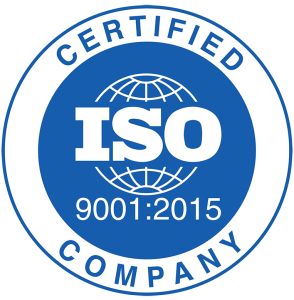We are a business that works doubly hard to supply top quality merchandise to customers and give them a first rate level of care. This allows us to meet the highest standards every time. Not to mention, we have a large number of tubing sizes to allow us to meet all kinds of specifications. In addition, ours are the best ERW steel tubes West Midlands can offer.
There are many common questions people ask about welded stainless steel products. One enquires about the heat tints and discolouration that appears following the welding. To help, we have written this article detailing the subject. We hope to give you some insight on why this issue occurs and how you can overcome it.
What are heat tints?
 Let’s start by talking about what heat tints are. They appear after stainless steel has been welded, and are common in the industry. Industrial terminology acknowledges that there are multiple terms relating to the same phenomenon. Some noteworthy examples include a rainbow effect, oxide scale, and discolouration. Each one signifies a change in colour on the steel’s top layer. It is within the heat-affected zone and around the weld bead.
Let’s start by talking about what heat tints are. They appear after stainless steel has been welded, and are common in the industry. Industrial terminology acknowledges that there are multiple terms relating to the same phenomenon. Some noteworthy examples include a rainbow effect, oxide scale, and discolouration. Each one signifies a change in colour on the steel’s top layer. It is within the heat-affected zone and around the weld bead.
As for the colour combination, this primarily depends on the level of heat you use in the welding. For the darker colours, they tend to form at higher temperatures like 698ºF or 370ºC. Examples of these colours include purple, blue, and brown. Please speak to us if you need the finest ERW steel tubes West Midlands has.
What causes the colour changes?
Now, we will talk more about what results in the symptomatic colour changes. Stainless steel has its corrosion resistant characteristics because of the chromium-rich composition. There is also the passive outer layer. Both help the metal to fight off rust.
During the welding operation the steel’s structure changes. A chemical reaction, oxidation, happens. This separates the chromium from the metal base. It also pushes it towards the external layer. With more oxygen and chromium, the steel’s outer layer loses its transparency and becomes thicker.
The biggest issue
Discolouration is an issue here, but not the main one. This would be the underlying chromium-depleted layer of your alloy. It becomes vulnerable to rusting and corrosion. Therefore, there is a twofold problem.
In order to restore the steel’s passive state, you first have to remove the tempered oxide scale. The most popular techniques to do this are mechanical grinding and wire brushing, chemical pickling, and electrochemical cleaning.
Which method you use should depend on how big the issue is. Electrochemical cleaning works well with discolouration that has lighter shades. Chemical pickling also sees a lot of use but the hydrofluoric and nitric acids can cause harmful effects. Thus, most people avoid it.
Stellar ERW steel tubes in the West Midlands
At Union Steel Tubes, to ensure our products meet the right standards, we test all of them. Plus, when you are using our services, we make sure that you are happy with the tubing. We also offer a steel cutting and processing service to supply tubes in cut and random lengths. That makes it easier for us to meet different needs.
So, if you desire the highest quality ERW steel tubes West Midlands has to offer, please call us. We can help you to select tubing for most projects, sharing our knowledge and expertise.


